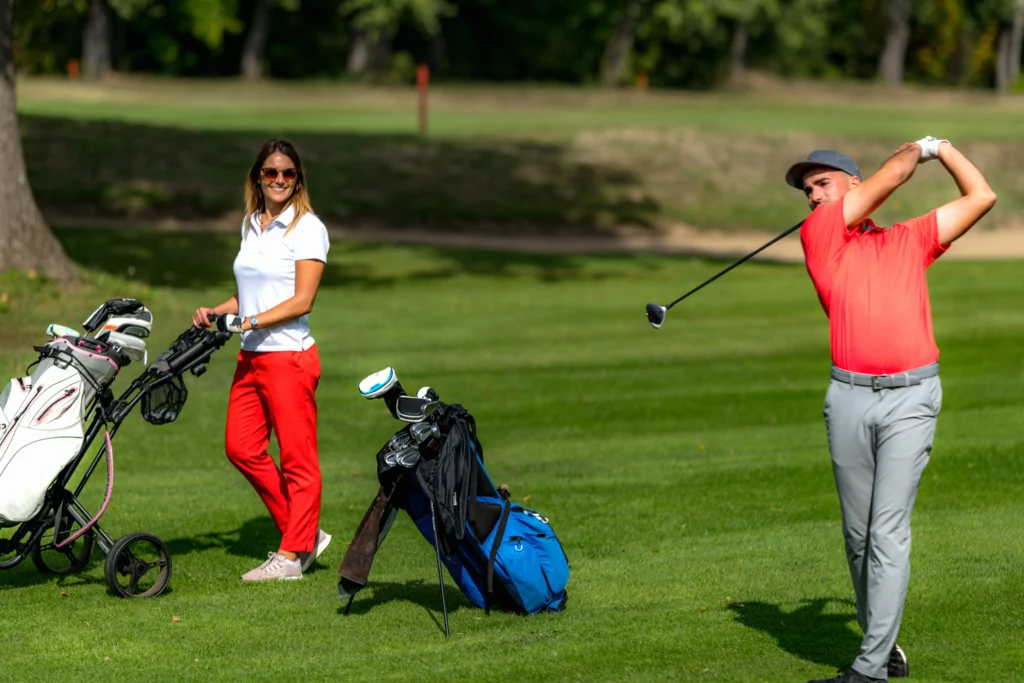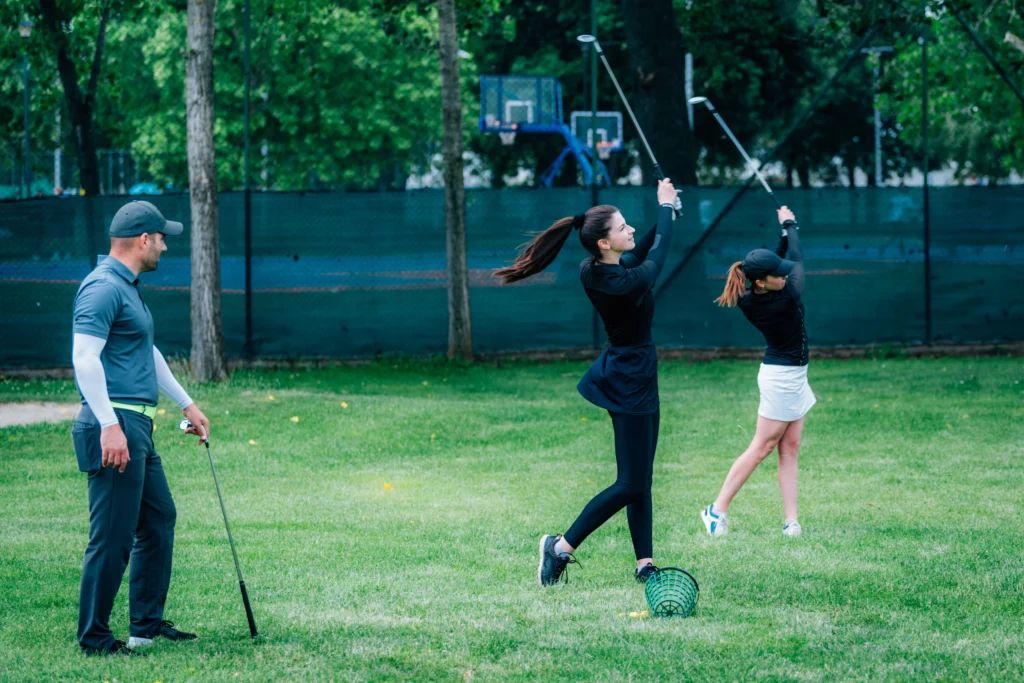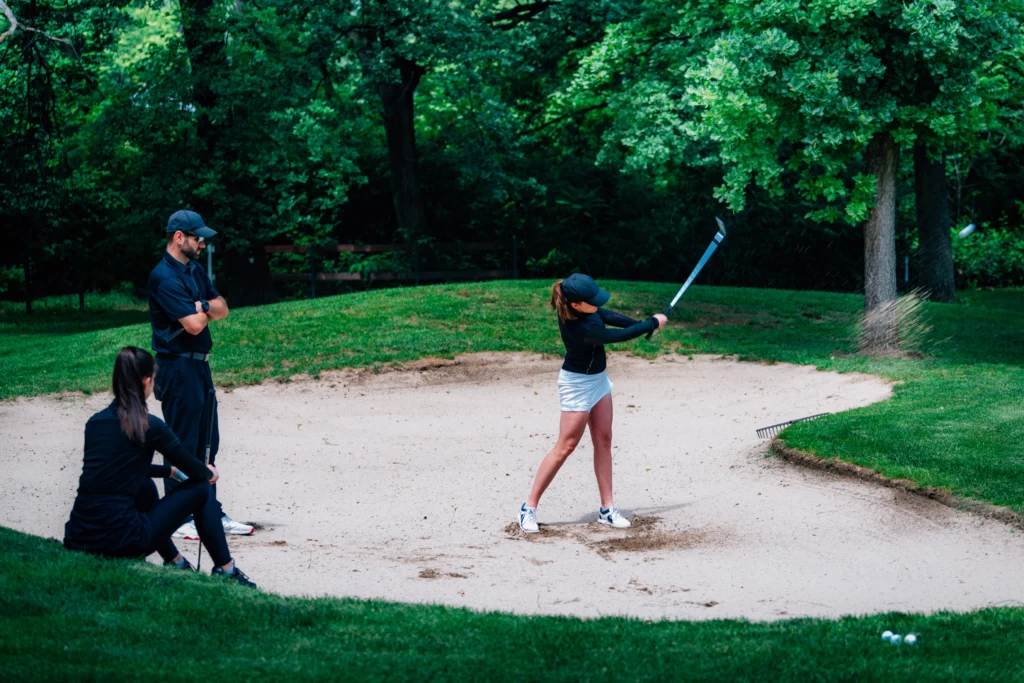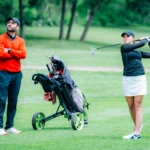
When you ask an avid golfer what determines whether a shot was successful or not, important details such as “tempo,” “grip,” and “follow-through” tend to come up. Beyond the handy details, there is one movement error, an unnoticeable flaw, that quietly sabotages shots, diminishes power, and induces inconsistency. This isn’t glamorous. It isn’t exactly in vogue or popular conversation. But it is essential.
Now let’s analyze the most prevalent overlooked backswing error: starting the swing with too much hip rotation as opposed to precise shoulder rotation.
A Common Scenario on the Range…
Picture this: You’re at the driving range. The sun’s just right, your stance is solid, and you’re feeling good. But as you swing, the ball veers off into a slice. Again. And again. You adjust your grip, check your clubface, even change your tempo, but nothing seems to work.
Here’s what’s likely happening: You’re initiating your backswing by turning your hips too early, rather than loading your shoulders first.
It’s such a common error that even intermediate players and weekend warriors do it without realizing.
And sadly, most golf tips online or from your buddy at the range don’t even mention it.
Why This Mistake Wreaks Havoc

As I’ve said before, the energy potential is stored during the backswing. During this stage, a torque is created between the upper and lower body in a zig-zag manner while the hips must not act too soon; otherwise, the powerful energy stored is wasted.
This stage comes with its consequences; pulling the hips leads the way –
– Causing undo rot both in the arms and the body.
– Skull sinking.
– Face lines starting propulsive endpoint reasons too soon, which leads to leads to round about propulsive motions
– Detecting motion less than optimal for the shot
– Off time directed upward motion not pre-prioritized slipping prone motion secluded
In essence, conflict results in shot after shot lacking unforced accuracy with ease, dependable bullying, unnecessary withdrawing, and furthering seemingly effortless dependence.
📊 In-Depth Comparison Table
| Component | Proper Backswing | Hip-Led Mistake |
|---|---|---|
| Initiation | Starts with the lead shoulder moving under the chin | Hips move aggressively before shoulders |
| Hip Rotation | Passive, controlled; follows the shoulder | Overactive; initiates the motion |
| Spine Angle | Maintains angle; head stays steady | Collapses or tilts, head sways |
| Weight Distribution | Maintains balance over the mid-foot | Weight shifts early, and often sways outside the back foot |
| Clubface Control | Stays neutral or slightly closed | Opens too soon |
| Stored Energy (Torque) | High body is coiled like a spring | Low, the coil is lost before it can unwind |
| Shot Outcome | Solid, straight, and powerful | Slice, pull, or loss of distance |
Why This Mistake Is So Easy to Miss
Unlike a bad grip or misaligned stance, this mistake happens in a fraction of a second and feels completely natural, especially if you’re trying to swing with “more power.” Over-rotating the hips feels powerful… until you see where the ball lands.
Even high-handicap golfers often develop this habit as they try to swing harder or mimic professionals without understanding body sequencing.
Fixing the Hidden Mistake: Practical Steps

1. Utilize a Mirror or Camera
Capture and playback your swing from a backside view and examine the initial movement. If your hips are already rotating ahead of the shoulders, you need to start over.
2. Attempt the Drill Known as ‘Shoulders First’
Take your golf stance, place your arms on your chest and turn your shoulders until the lead one is directly under your chin. Your hips need to be still for the most part. This should be done repeatedly and slowly.
3. Resistance Band Drill
Fix a resistance band to your waist and have the other end anchored behind. While your hips are kept under restraint, practice the takeaway. This will improve the timing sequence of your body.
4. Split-Hand Takeaway
Take the club with each hand a few inches apart. This encourages over-exaggeration of proper shoulder motion and restricts poor kinetic sequencing.
5. Swing Analysis by a Professional
Plenty of coaches nowadays will utilize HackMotion or 3d motion capture technology to demonstrate what moves first. For those who want to go deeper, just one session can completely change your swing blueprint.
Real-World Quotes from Coaches
“If you start your backswing with your hips, you’re chasing the ball from the wrong direction the rest of the swing.”
— Ben Hall, PGA Instructor“Most golfers don’t have a bad swing, they just start it in the wrong order.”
— Cathy Brogan, LPGA Coach
Frequently Asked Questions
Q1. Why is it that most people have early hip rotation?
A: It’s automatic. A majority of the athletes think of the hips as the centre of power, but they muscle in too early, and that messes up the sequence and timing.
Q2. Are the hips, in the backswing, allowed to move at all?
A: Yes, but not first. The hips should be a response to the turn of the shoulders, not a precursor.
Q3. Can this error apply to both drivers and irons?
A: Of course. The consequences may be different (driver’s slice, irons’ pull), but the cause is identical.
Q4. Is this an example of a habit that is fairly simple to break?
A: Most avid golfers can make noticeable improvements in two to four weeks with sustained, focused drills of 10-15 minutes per day.
Q5. What if I apply this change and still hit poor shots?
A: This is all about building. Everything combines with this one; you need to add grip, posture, and rhythm for a proper swing overhaul.
Final Thoughts
In golf, small hinges swing big doors. The backswing mistake that no one talks about might be the one that is holding you back. Focus on your shoulders, silence your hips, and observe how your swing becomes powerful, dependable, and capable of being repeated over and over.
Related posts:
 The Rule-Breakers: 7 Best Illegal Golf Balls to Enhance Your 2025 Game
The Rule-Breakers: 7 Best Illegal Golf Balls to Enhance Your 2025 Game
 What If L.A.B. Golf is Right? An Examination of Revolutionary Putting Techniques
What If L.A.B. Golf is Right? An Examination of Revolutionary Putting Techniques
 Understanding Golf Shot Trajectory: Key Factors Influencing Ball Flight and Distance
Understanding Golf Shot Trajectory: Key Factors Influencing Ball Flight and Distance
 Golf Stance Width: 3 Setup Rules Every Golfer Should Know for Better Balance and Power
Golf Stance Width: 3 Setup Rules Every Golfer Should Know for Better Balance and Power
